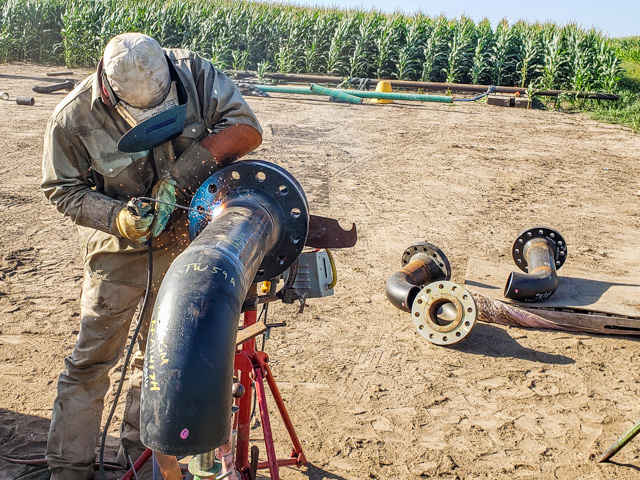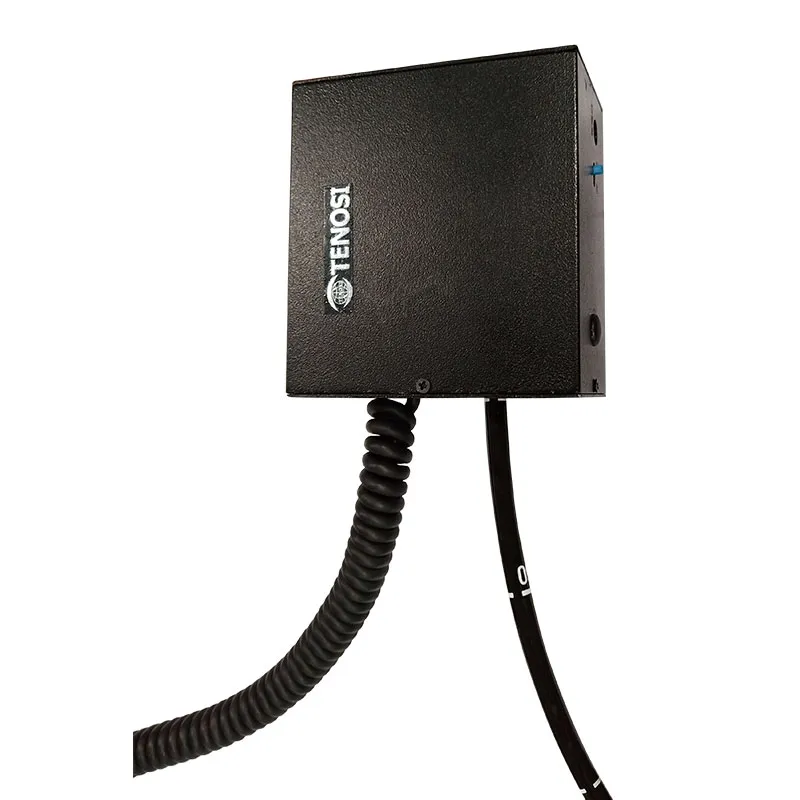Advanced Strategies in Pipeline Welding Inspection: Technologies and Technologies for Boosted Accuracy and Dependability in Weld Analysis
The landscape of pipeline welding examination is undertaking a significant makeover, driven by sophisticated strategies that guarantee to improve both accuracy and integrity in weld assessments. Developments such as automatic assessment systems and advanced imaging technologies are redefining standard methods, while non-destructive testing techniques make sure product stability is kept. As these technologies evolve, they not only elevate problem detection rates yet likewise allow more efficient maintenance strategies. However, the ramifications of these innovations extend past prompt benefits, raising essential concerns concerning future methods and standards in the sector.

Relevance of Weld Examination
Ensuring the integrity of pipe welds is crucial to the overall safety and reliability of industrial systems. Welds function as the structural backbone of pipes, which deliver a variety of fluids under differing stress. Flaws in welding can cause devastating failures, leading to not only substantial economic losses however additionally prospective ecological calamities and hazards to public security. Consequently, extensive examination of welds is integral to the lifecycle of pipe infrastructure.
The significance of weld assessment extends beyond mere compliance with regulative standards. It offers as a proactive action to determine and fix blemishes, such as incomplete fusion, porosity, or splits, before they intensify right into significant issues. Effective evaluation techniques likewise add to the longevity of pipelines, reducing maintenance costs and improving operational efficiency.
In addition, comprehensive weld assessments foster trust amongst stakeholders, including regulatory bodies, investors, and the communities offered by these pipelines. By making certain that all welds meet the required requirements, companies can reduce threats and maintain their credibilities. In summary, weld assessment is essential not only for operational stability yet also for the broader implications it holds for safety and environmental stewardship.
Automated Inspection Solutions
The combination of automated inspection systems in pipe welding has actually transformed the technique to making certain weld top quality and stability. These systems employ sophisticated robotics and man-made intelligence to carry out evaluations that are not just faster yet additionally much more constant than traditional techniques. Automated systems can cover substantial lengths of pipes effectively, recording data that human examiners might neglect because of exhaustion or environmental conditions.
Among the vital advantages of automatic assessment systems is their capacity to run in hazardous environments, minimizing the danger to human examiners. They use various non-destructive screening (NDT) techniques, such as ultrasonic testing and magnetic fragment examination, to evaluate weld honesty without compromising the structure. The data gathered is processed in real-time, permitting for instant responses and prompt corrective actions when flaws are recognized.
Additionally, automated systems facilitate the standardization of inspection procedures, ensuring that each weld is examined against regular criteria. This not only enhances the dependability of outcomes yet additionally streamlines conformity with regulatory standards. As sectors proceed to prioritize safety and security and functional effectiveness, the duty of automated assessment systems in pipeline welding will certainly increase, paving the means for a lot more innovative quality control approaches.
Advanced Imaging Technologies
Often used in modern pipeline welding inspections, advanced imaging modern technologies have actually considerably improved the capacity to detect and analyze weld problems. Techniques such as electronic radiography, calculated tomography, and thermographic imaging supply inspectors with high-resolution images that expose sub-surface flaws and architectural incongruities that might be invisible to the naked eye.
This leads to quicker examinations and enhanced precision in determining crucial problems. Calculated tomography, on the other hand, provides three-dimensional imaging, allowing examiners to visualize complex geometries and evaluate the stability of welds from multiple angles.
Thermographic imaging employs infrared technology to identify variants in temperature, determining areas of possible weak point or stress and anxiety within the weld. These anchor advanced imaging technologies not only enhance defect discovery rates however additionally lower the time and sources required for pipe evaluations. Consequently, they play a critical function in maintaining pipeline safety and reliability, guaranteeing compliance with sector standards while lessening functional risks.
Non-Destructive Testing Methods
Making use of different methods, non-destructive screening (NDT) techniques are necessary in pipeline welding evaluations, enabling for the analysis of weld honesty without jeopardizing the material's architectural honesty. NDT includes a series of approaches, consisting of ultrasonic testing (UT), radiographic testing (RT), magnetic particle testing (MT), and color penetrant screening (PT) Each method has distinct advantages and applications depending on the specific demands of the examination.
Ultrasonic testing utilizes high-frequency acoustic waves to detect internal imperfections, giving exact dimensions of weld density and stability. Pipeline Welding Inspection. Radiographic testing employs X-rays or gamma rays to produce pictures of the weld, revealing internal flaws that may not be noticeable on the surface. Magnetic particle screening works for detecting surface and near-surface gaps in ferromagnetic products, while dye penetrant screening highlights surface area splits by utilizing a colored dye
Incorporating these NDT methods right into pipe welding evaluations boosts the precision and integrity of weld assessments, guaranteeing that prospective failures are identified early. As sectors demand higher criteria for safety and security and efficiency, the duty of NDT in maintaining the stability of welded structures remains to be pivotal in pipeline construction and upkeep.

Future Trends in Weld Analysis
As we look to the future of weld evaluation, developments in technology are positioned to transform the methods employed for examining pipeline stability. The integration of fabricated intelligence (AI) and equipment learning in inspection procedures is expected to enhance the precision of problem discovery and anticipating maintenance. These technologies permit real-time information analysis, making it possible for examiners to determine possible problems prior to they escalate into substantial troubles.
Furthermore, the use of drones furnished with advanced imaging systems is obtaining traction. These airborne inspections can cover vast locations quickly, recording high-resolution photos and information that can be assessed for defects in hard-to-reach locations. This not only boosts safety however additionally enhances effectiveness in the assessment procedure.
In addition, the advancement of wise sensing units installed in pipe systems supplies the possibility for continual monitoring. These sensors can find changes in stress, temperature level, and resonances, supplying important understandings into the health of the welds in time.

Final Thought
To conclude, the combination of sophisticated strategies in pipeline welding inspection substantially improves the accuracy and integrity of weld assessments. Innovations such as automated assessment systems, progressed imaging modern technologies, and non-destructive testing methods play a critical duty in boosting problem discovery rates and promoting proactive maintenance approaches. As these modern technologies remain to develop, they will certainly even more make certain the safety and security and efficiency of pipe click over here systems, eventually contributing to the honesty of essential framework.
